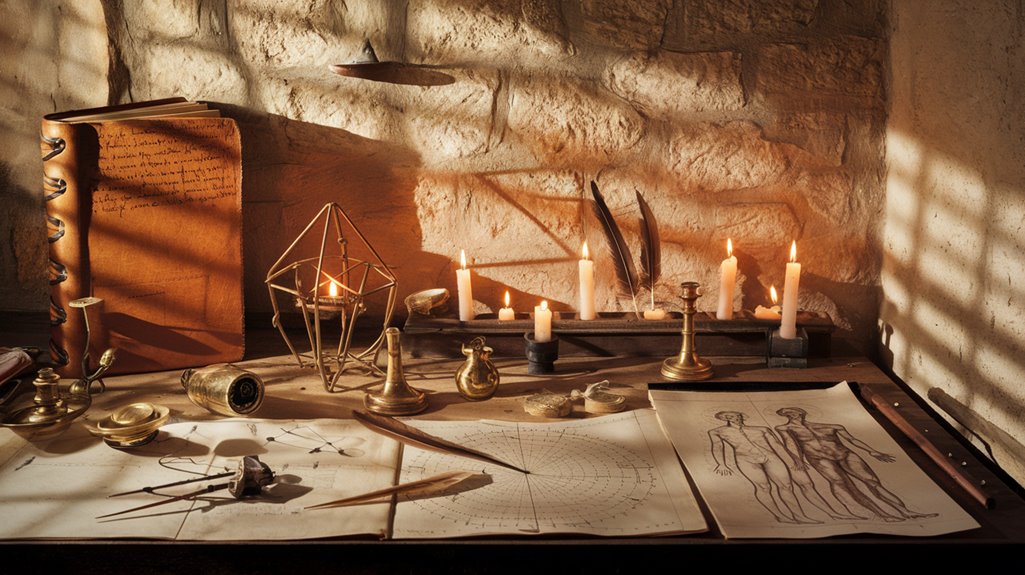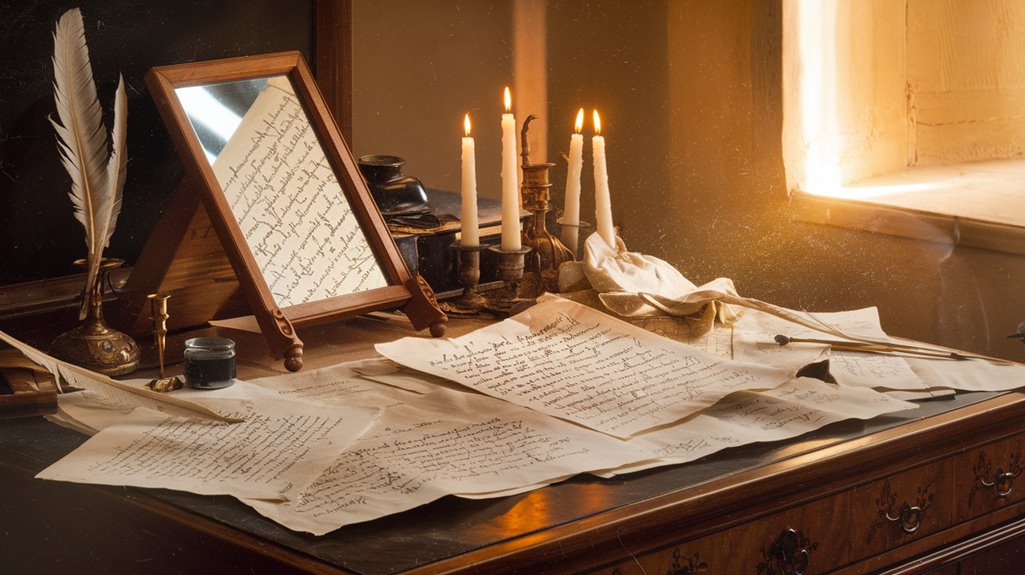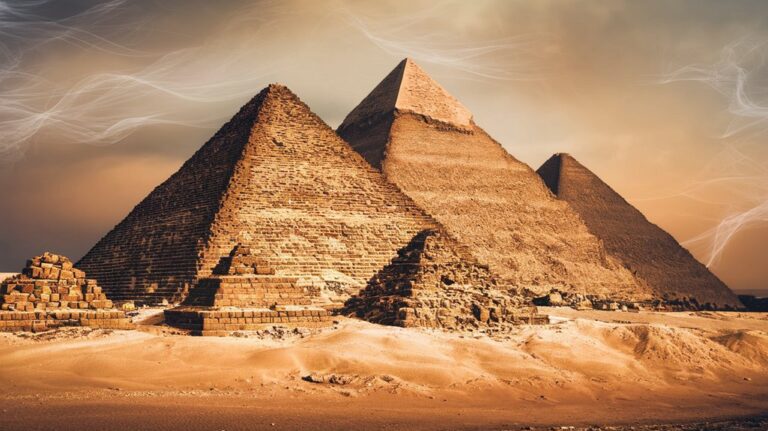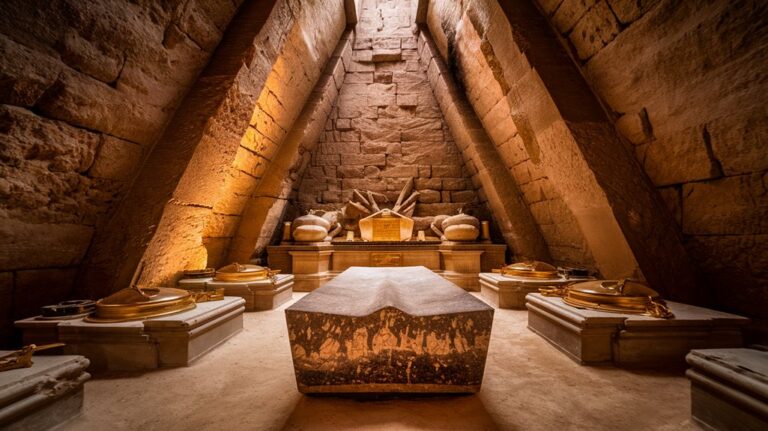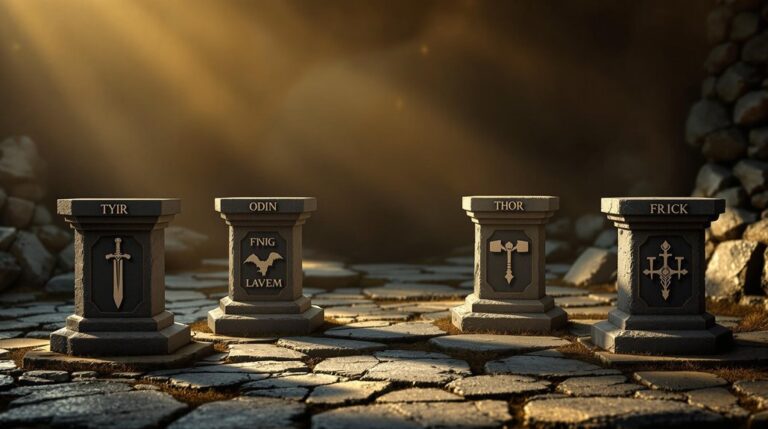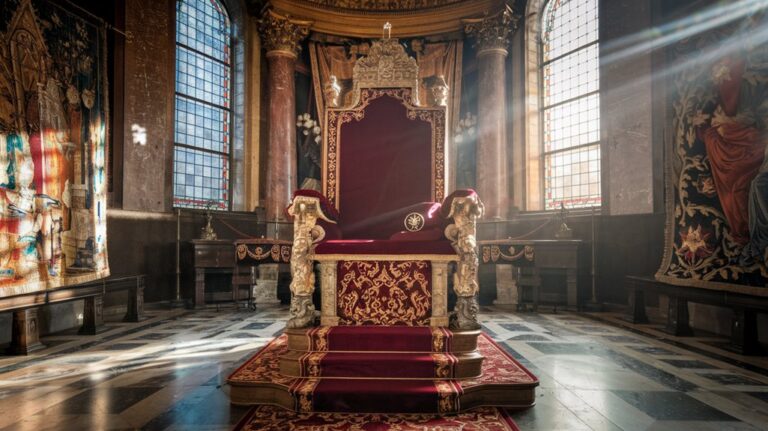Leonardo Da Vinci Often Wrote in Mirror Script
While most Renaissance artists left their legacy through paintings and sculptures, you'll find Leonardo da Vinci's genius reflected in his mysterious mirror script. You can only decipher his personal notebooks by holding them up to a mirror, revealing his thoughts written from right to left. Whether this unique approach served as a security measure or simply suited his left-handed nature remains debated, but the real story behind his reversed writing style offers surprising insights into his brilliant mind.
The Mystery Behind Leonardo's Reverse Writing
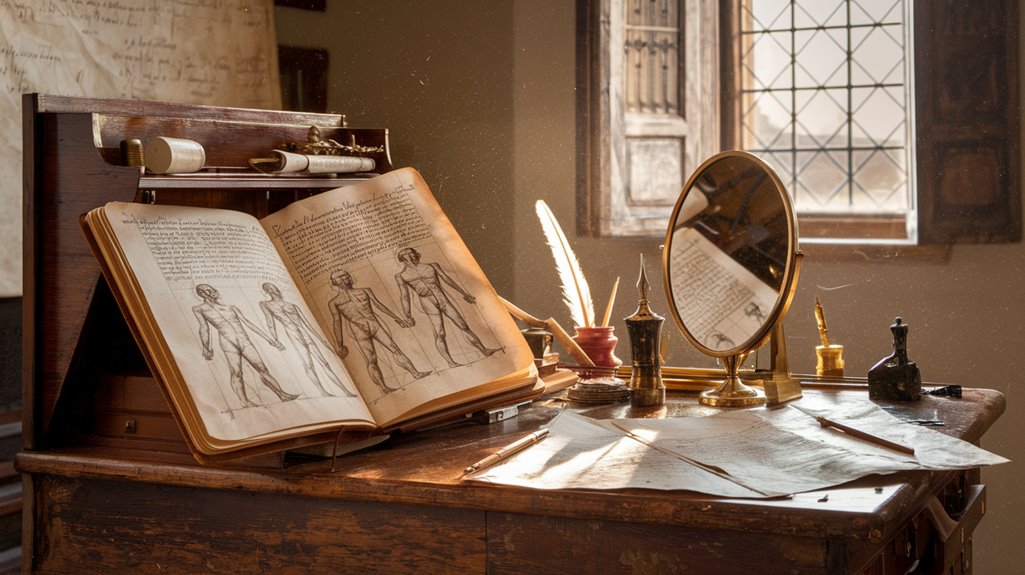
Why did one of history's greatest minds choose to write backwards? The mystery of Leonardo da Vinci's mirror script has puzzled scholars for centuries.
While secrecy theories suggest he wrote in reverse to protect his ideas, this explanation falls short when you consider how simple mirror writing is to decode. If Leonardo wanted to hide his work, he likely would've created a more sophisticated code.
A more practical reason emerges when you consider his left-handed writing. As a lefty, writing from left to right would've caused ink smudging, an issue Leonardo could avoid by writing in reverse. Historical records confirm that he wrote and painted with his left hand. When writing for general audiences, he used standard script, demonstrating that his mirror writing wasn't a universal practice. This explanation aligns with his known preference for cleanliness in his work.
While some suggest he did it to challenge conventions or as a mental exercise, the evidence points most strongly to this practical solution.
Cultural and Historical Context of Mirror Script
The historical usage of mirror script extends beyond mere artistic expression.
In the Ottoman Empire, calligraphers created elaborate calligrams using mirror symmetry, while in Late Antiquity, examples appeared throughout Syria-Palestine, Egypt, and Constantinople. The Bektashi order within the Ottoman Empire maintained a fascinating mystical association with mirror writing.
You can even spot mirror writing in early peep show images and zograscope headers.
This rich tradition reminds us that Leonardo's mirror writing wasn't an isolated phenomenon but part of a broader cultural heritage.
Scientific Analysis of Leonardo's Handwriting
Modern scientific analysis has revealed fascinating insights into Leonardo da Vinci's unique handwriting abilities. Through thorough handwriting analysis conducted at Florence's Uffizi Gallery, researchers have confirmed that he was truly ambidextrous, using his left hand for mirror writing and his right hand for standard script.
You'll find that scientists employed sophisticated techniques to verify this discovery. Using microscopes, infrared light, and fluorescent X-rays, they examined a 1473 drawing with inscriptions on both sides. The drawing depicts the Arno Valley and its surrounding landscapes.
These ambidextrous techniques showed remarkable consistency in key features, despite being written with different hands. The analysis also revealed that da Vinci's right-handed writing was well-formed, suggesting he underwent early training to master both hands. Experts believe he developed mirror writing as a smudge-prevention method when writing with his left hand.
This discovery adds another layer to our understanding of his extraordinary capabilities.
The Legacy and Impact of His Unique Writing Style
While historians continue to debate Leonardo da Vinci's motives for mirror writing, his unique penmanship style has left an indelible mark on art, literature, and scientific documentation.
You'll find his influence in literary works like Lewis Carroll's "Through the Looking Glass," where mirror writing serves as a central theme. His technique has also sparked numerous psychological theories about right-brain dominance and unconventional thinking patterns. Being left-handed himself, da Vinci likely developed this writing style to prevent ink from smudging as he wrote across the page.
Today, you can see Leonardo's legacy in educational programs where students explore mirror writing to understand Renaissance innovation.
His distinctive style has inspired artists, writers, and scientists to challenge conventional methods of documentation. Whether he wrote in reverse to prevent smudging or to protect his ideas, Leonardo's mirror script remains a fascinating example of how one person's unique approach can influence culture across centuries.
Practical Applications and Artistic Significance
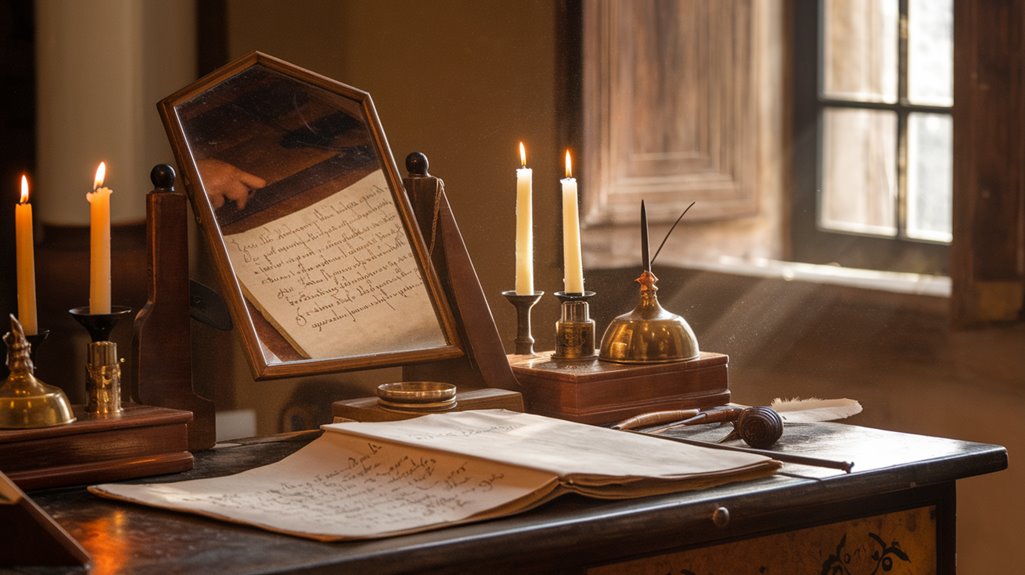
Mirror writing's practical applications extend far beyond mere artistic novelty. You'll find practical benefits in its ability to prevent ink smudging, particularly for left-handed writers like da Vinci himself. The technique also slows down the writing process, helping you retain information better and think more deeply about your ideas. Writers can experience enhanced creativity as the technique fosters inner stillness. Throughout his numerous notebooks dating back to the mid-1480s, da Vinci consistently employed this unique writing style.
As an artistic innovation, mirror script showcases da Vinci's experimental nature and his unique approach to merging art with science. You can see this in his anatomical studies and the famous Vitruvian Man, where mirror writing accompanies his detailed sketches.
His influence continues to inspire artists today, from Lewis Carroll's literary works to modern artistic expressions. The technique's compatibility with different writing systems, such as traditional Japanese and Hebrew, demonstrates its versatility across cultural boundaries.

